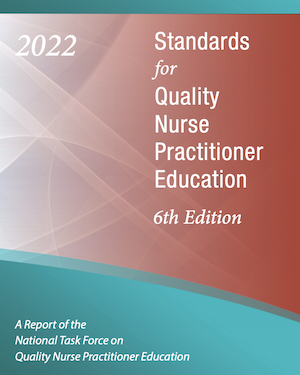
Standards for Quality Nurse Practitioner Education
The National Task Force on Quality Nurse Practitioner Education, a coalition of 19 national nursing organizations, has developed a new set of standards designed to ensure quality in graduate programs that prepare nurse practitioners (NPs). Criteria will help programs update curriculum and clinical experiences to better prepare graduates for contemporary NP practice.
Download